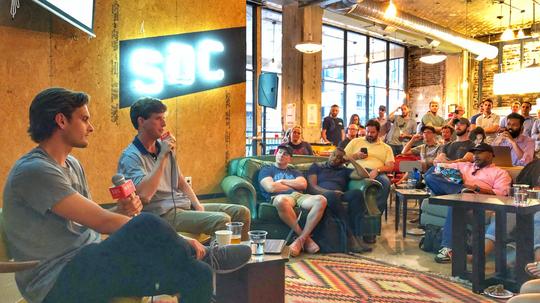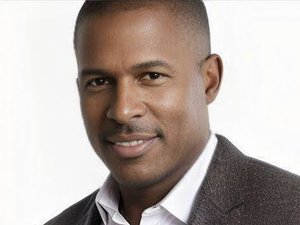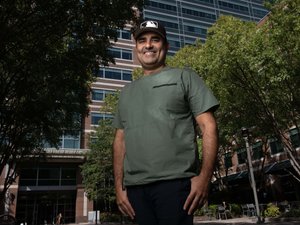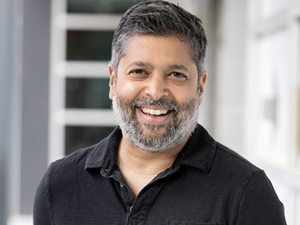
I have two distinctive memories of social media that I recall vividly: the first time I heard of Facebook in 2008 after putting in the excruciating hours to make my MySpace as cool as possible, and the night I was home from college during fall break my freshman year and I downloaded Yik Yak.
For Facebook, the story hasn't changed much. I immediately made a profile, added more friends than I actually had and am now still using the site, a little begrudgingly, to stay connected to friends and family (one of the perks of being on a social media site for a decade with a "memories" feature is rereading the embarrassing statuses you made about "Twilight" in middle school).
Yik Yak was a different story. I don't remember if someone told me about the app or if I had stumbled upon it in the app store out of sheer boredom, but I can recall the night I was sitting on the couch in my childhood home scrolling through the feed of anonymous Yaks. There wasn't much to read, a few posts here and there about events on Kennesaw State University's campus, just a few miles down the road from me, but it made me think, "Hmm...this is interesting."
When I returned to school at Indiana University-Bloomington, I noticed the app no longer worked: no more statuses complaining of crappy dining hall food or parties happening on campus. I don't remember how long it took for Yik Yak to come to my college, but when it did, I can recall how it changed everything. It's where I posted that I'd found someone's student ID on the sidewalk and they were able to reclaim it. It was the app where I heard about the news of a student's suicide faster than the school newspaper, where I worked. It's the place where students would go to be "in the know."
I didn't think there was much I didn't know about Yik Yak, after being an active user for years. I'm sure that's how many of us feel, after watching the sudden boom, rise and shutdown of Atlanta's first notable social media app in just four short years. But I had the pleasure of listening to the whole story from the founders themselves, Brooks Buffington and Tyler Droll, at Switchyards Downtown Club's "Made in Atlanta" speaker series Thursday night.
If you didn't have the chance to listen in, no worries. These are 10 things I learned about the social media app that put Atlanta on everyone's radar.
- Despite constant pressure to move out West, Droll and Buffington were adamant about keeping Yik Yak in Atlanta. The city, which isn't the best ecosystem for a B2C social media app, was where the founders found a home and wanted to grow their company. "When we were raising our first rounds, it was almost a requirement to move out to San Francisco in order to get the funding," Droll said. "But we were steadfast about wanting to do it in Atlanta."
- Buffington still has a Yak costume. Y'all know the one. "My brother-in-law busted it out at someone's wedding," he said. "They didn’t know Yik Yak at all."
- There were a few bad app ideas prior to Yik Yak. One of the apps Droll and Buffington developed prior to Yik Yak was Cuddle Buddies, where the user would select a cute character, see it move around for a few seconds and immediately enter a hostage situation with a virtual gunman to either let the animal die or donate a dollar within 10 seconds. "It got rejected by Apple for not offering lasting value," Buffington said. "I still think it was a good idea."
- The idea spawned from what everyone wants on Twitter: a witty account that makes us internet famous on campus. Every college has those notorious, funny Twitter accounts that everyone follows. After spending hours on the couch at college trying to come up with a witty Twitter handle relating to Furman University's campus, where Droll and Buffington were students, and realizing it would take months to acquire an audience and the right content, Droll mused about an app that would allow any status to be seen by his peers instantly. "Why not have a map you can open and instantly send a message to the campus?" he said.
- Droll built the code for the initial version of the app in two weeks. Following its launch at Furman, Georgia Tech was the second campus to ever allow Yik Yak. Buffington said he spent the early days of the app posting Yaks pretending to be different people to make it seem like more users were on it.
- The founders asked campuses to permit the app the old fashion way: email. In the beginning stages of Yik Yak, Buffington and Droll would cold email campuses asking them to implement the app. Their subject line? "Can you do a solid for a couple rad dudes?"
- Their marketing strategy was simple: be yourself and do what no one else will do. Marketing was a section of the business Droll and Buffington had nailed down. Inspired by Red Bull's campaigns, the founders would send representatives to college campuses, run creative events like Easter Egg hunts and use their mascot to bring notoriety around the country. They even got George H. W. Bush to wear a pair of their Yak socks.
- They knew they made something powerful when Yik Yak was used during a school shooting incident. Droll and Buffington were used to seeing connectivity on the app---like the one time someone complained about having cereal but no milk, and another user met up with them to donate milk to his breakfast endeavors. But it wasn't until a gunman started shooting in a library on Florida State University's campus in 2015 and students were using Yik Yak to communicate his location that they realized what they created. "This is pretty crazy, that we’re connecting 20,000 or 30,000 users on this campus," Buffington said. "This is absolutely insane that we’re connecting all these people."
- The downfall? They stopped listening to their users. Droll said, like many startups that gain traction faster than expected, the founders were distanced from their users. What once started as two guys and their audience turned into a company valued at more than $400 million. "You know your customers and users better than anyone else," Buffington said. "Once you start to stray away form your users, then things can go bad."
- They're still hustling. Buffington wanted to get away from pure tech for a while and headed out to the Bay area to work with a scooter rideshare company. Droll is currently developing two different startups: a machine learning company that helps indie films get wide distribution and a healthcare startup that will assist medical device representatives.








